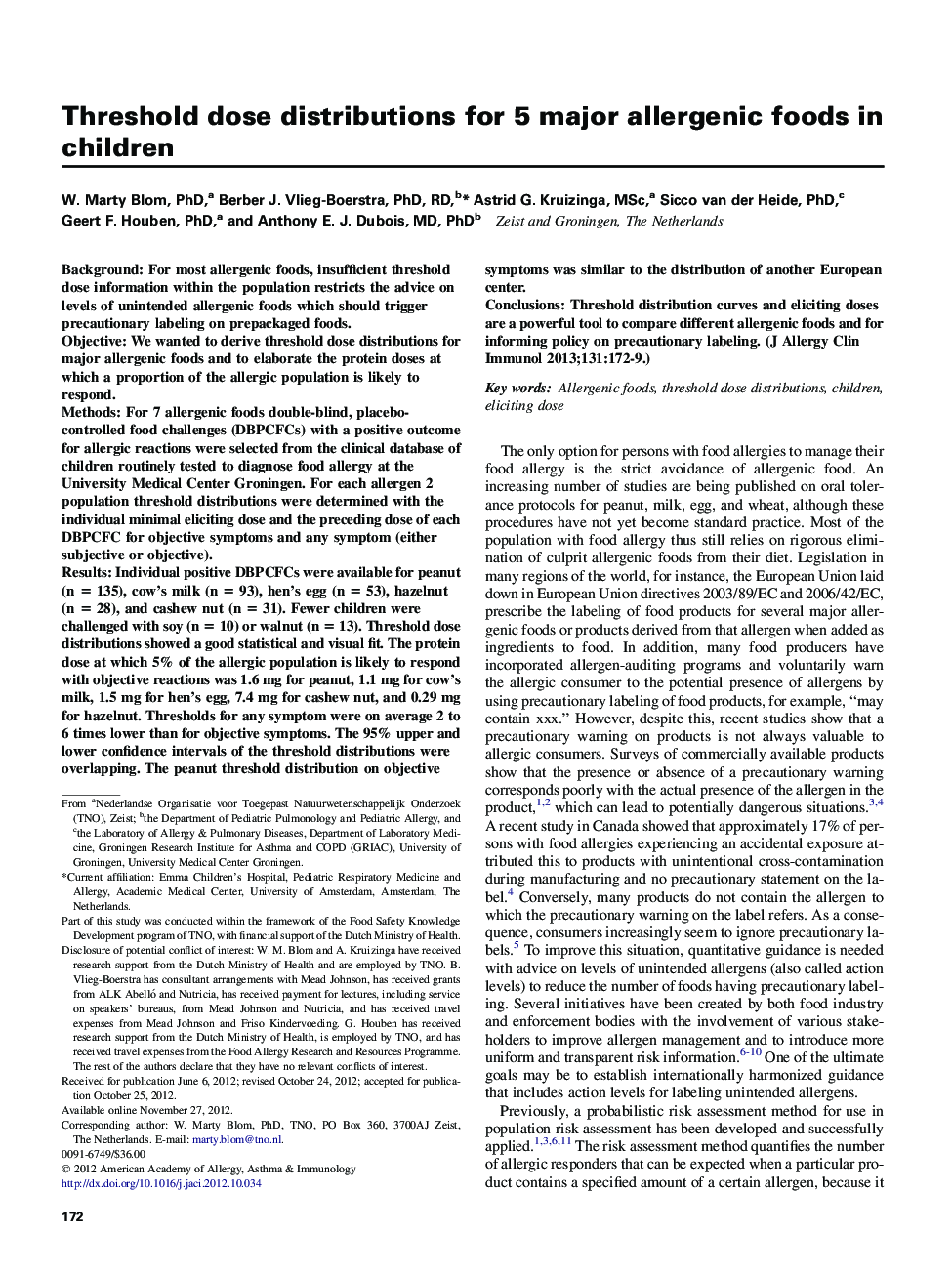| کد مقاله | کد نشریه | سال انتشار | مقاله انگلیسی | نسخه تمام متن |
|---|---|---|---|---|
| 6066229 | 1201883 | 2013 | 8 صفحه PDF | دانلود رایگان |
BackgroundFor most allergenic foods, insufficient threshold dose information within the population restricts the advice on levels of unintended allergenic foods which should trigger precautionary labeling on prepackaged foods.ObjectiveWe wanted to derive threshold dose distributions for major allergenic foods and to elaborate the protein doses at which a proportion of the allergic population is likely to respond.MethodsFor 7 allergenic foods double-blind, placebo-controlled food challenges (DBPCFCs) with a positive outcome for allergic reactions were selected from the clinical database of children routinely tested to diagnose food allergy at the University Medical Center Groningen. For each allergen 2 population threshold distributions were determined with the individual minimal eliciting dose and the preceding dose of each DBPCFC for objective symptoms and any symptom (either subjective or objective).ResultsIndividual positive DBPCFCs were available for peanut (n = 135), cow's milk (n = 93), hen's egg (n = 53), hazelnut (n = 28), and cashew nut (n = 31). Fewer children were challenged with soy (n = 10) or walnut (n = 13). Threshold dose distributions showed a good statistical and visual fit. The protein dose at which 5% of the allergic population is likely to respond with objective reactions was 1.6 mg for peanut, 1.1 mg for cow's milk, 1.5 mg for hen's egg, 7.4 mg for cashew nut, and 0.29 mg for hazelnut. Thresholds for any symptom were on average 2 to 6 times lower than for objective symptoms. The 95% upper and lower confidence intervals of the threshold distributions were overlapping. The peanut threshold distribution on objective symptoms was similar to the distribution of another European center.ConclusionsThreshold distribution curves and eliciting doses are a powerful tool to compare different allergenic foods and for informing policy on precautionary labeling.
Journal: Journal of Allergy and Clinical Immunology - Volume 131, Issue 1, January 2013, Pages 172-179
